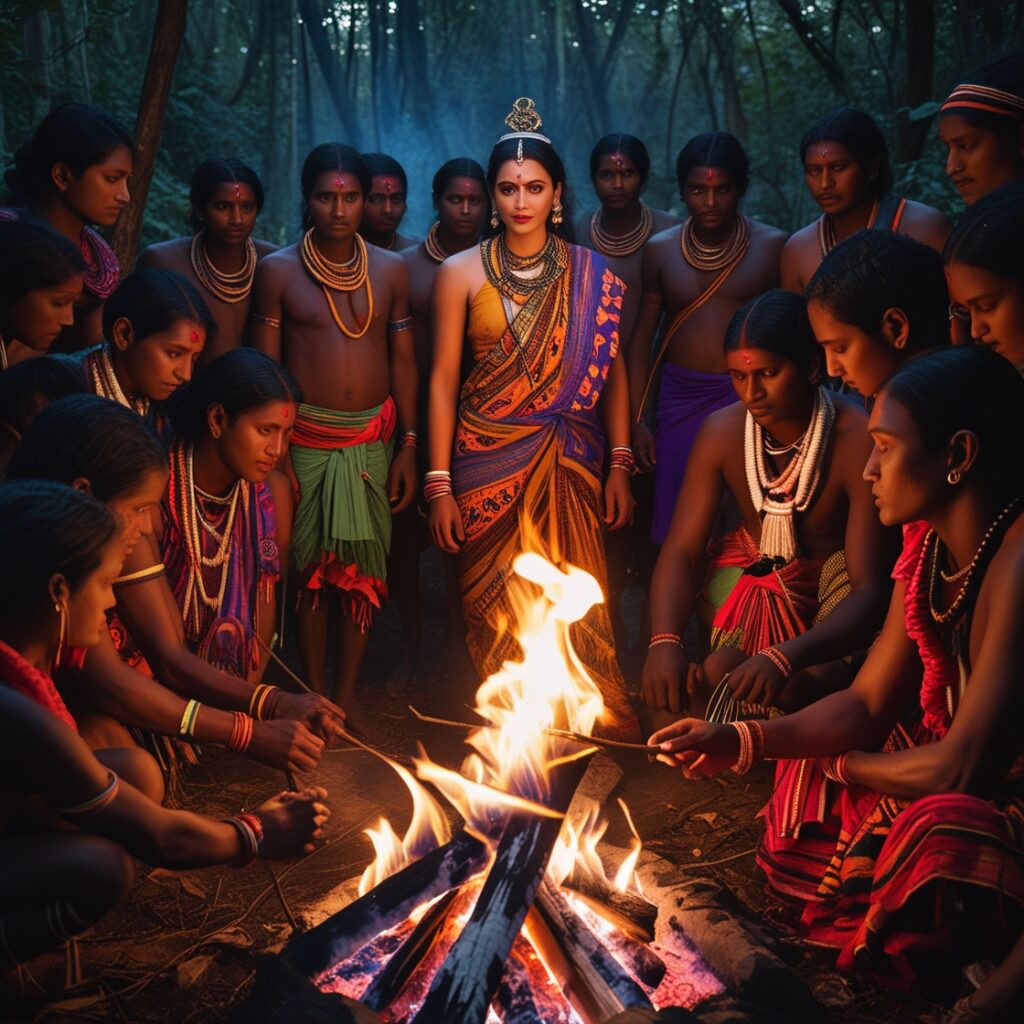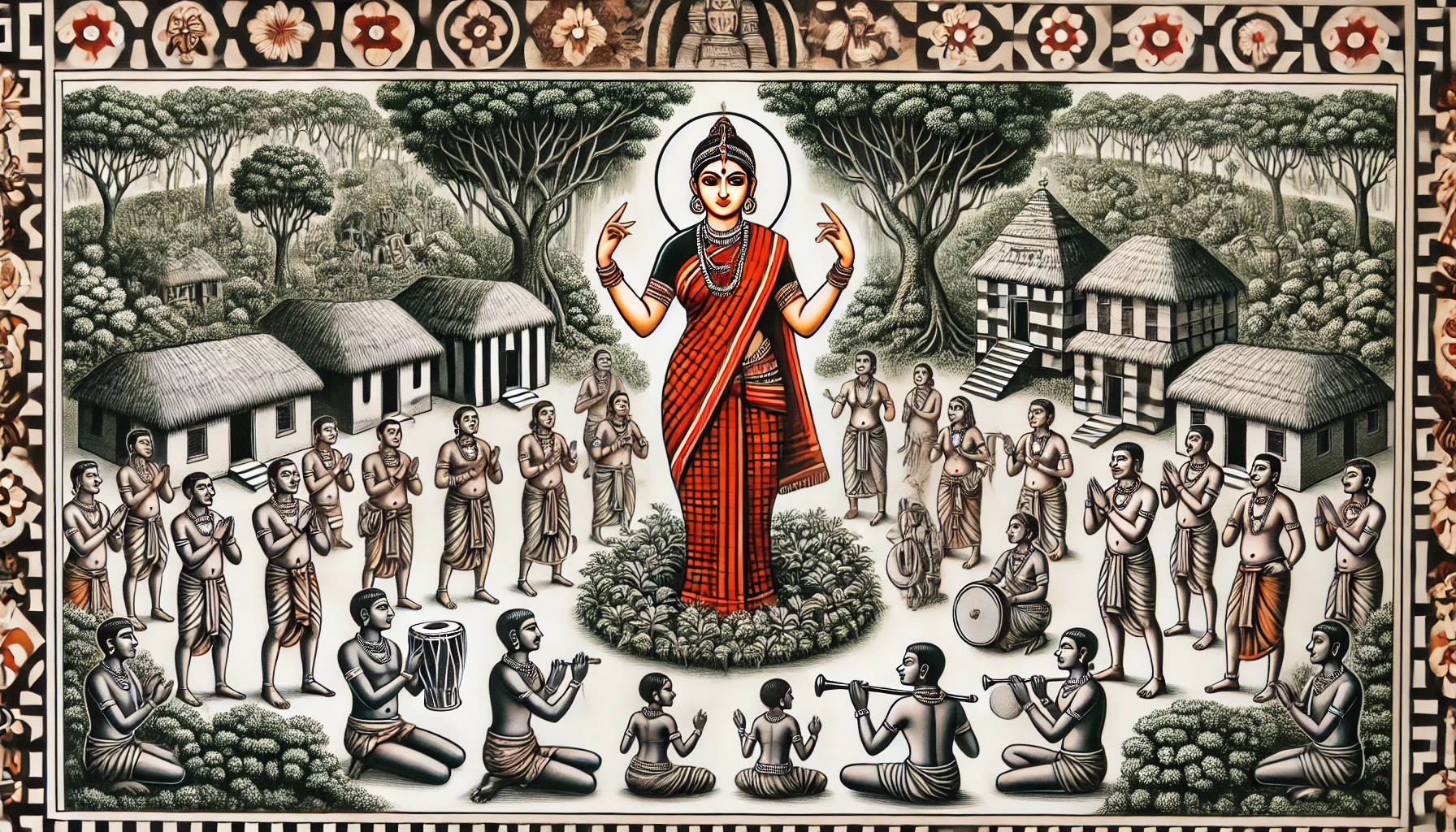The Santhal tribal community, one of India’s largest and most prominent tribal groups, holds a significant place in the country’s history and cultural landscape. Recently, the Prime Minister paid tribute to their bravery and sacrifices, further highlighting their role in shaping India’s identity. Found primarily in the eastern states of Bihar, Jharkhand, West Bengal, and Odisha, the Santhals are the third-largest Scheduled Tribe community in India, after the Gonds and Bhils.
JEE Mains 2025 City Allotment Released: What to Do Next?
Historical and Cultural Background
The Santhals have a rich history of resilience and cultural vibrancy. Originally a nomadic community, they settled on the Chotanagpur plateau and later concentrated in the Santhal Parganas of Jharkhand (formerly Bihar) by the late 18th century. From there, they migrated to parts of Odisha and West Bengal.
Language:
- The Santhals speak Santali, a dialect of Kherwari from the Austroasiatic language family.
- Written in the Ol Chiki script, Santali is recognized as one of the scheduled languages in the Eighth Schedule to the Indian Constitution.
Cultural Aspects:
- Religion and Beliefs: The Santhals are nature worshippers, paying obeisance at Jaher (sacred groves) in their villages. Central deities include Marang Buru and Jaher Ayo.
- Traditional Attire:
- Men typically wear dhoti and gamuchha.
- Women wear short-check sarees in blue and green, often adorned with tattoos.
- Marriage and Social Structure:
- Various forms of marriage are accepted, including elopement, widow remarriage, and levirate.
- Divorce is socially acceptable, and either partner can initiate it.
- Homes: Santhal homes, called Olah, feature distinctive three-color patterns on their outer walls: black soil at the bottom, white in the middle, and red at the top.
- Art and Dance: Dance (Enej) and music (Sereng) are integral to their community life, with traditional instruments like the Tamak, Tumdak, and flute accompanying their performances.
Santhal Rebellion (1855-56)
One of the most notable events in Santhal history is the Santhal Rebellion, a significant uprising against British colonial rule. This peasant revolt, led by Sidhu and Kanhu Murmu, occurred between 1855 and 1857 and was fueled by the implementation of the Permanent Land Settlement of 1793, which severely impacted their traditional agrarian lifestyle. This rebellion remains a symbol of the Santhal’s courage and resilience.
Economic Activities
The Santhals predominantly rely on agriculture, with most families engaged in farming or seasonal forest collection for supplementary income. Their deep connection with nature is reflected in their sustainable practices and reverence for the environment.
Constitutional Provisions for Tribal Communities

The Indian Constitution provides several safeguards to protect the rights and identity of tribal communities like the Santhals.
Scheduled Tribe Status:
- Recognized under the Constitution (Scheduled Tribes) Order, 1950, the Santhals enjoy specific rights and protections.
Key Constitutional Safeguards:
- Educational and Economic Rights:
- Articles 15(4) and 46 promote their educational and economic welfare.
- Reservations in education and employment under Articles 15(4), 16(4), and 335.
- Political Representation:
- Articles 243D and 330 ensure reserved seats for Scheduled Tribes in Panchayats, municipalities, and the Lok Sabha.
- The Fifth Schedule governs the administration of Scheduled Areas, focusing on tribal welfare.
- Protection of Land and Resources:
- The Panchayats (Extension to Scheduled Areas) Act, 1996 (PESA), empowers Gram Sabhas in managing natural resources.
- The Forest Rights Act, 2006, recognizes tribal rights over forest land and resources.
- Cultural Preservation:
- Article 29 protects their right to conserve language, script, and culture.
- Article 350A ensures primary education in their mother tongue.
- Master All Amendments of the Indian Constitution: Key Points for UPSC, UPPSC, BPSC, RPSC, and All State Exams.
Challenges Faced by the Santhal Community
Despite constitutional safeguards, the Santhals face several challenges:
- Land Alienation: Industrialization and mining have led to displacement and loss of ancestral land.
- Illiteracy: Limited access to quality education remains a hurdle.
- Healthcare Issues: The community struggles with inadequate healthcare facilities and malnutrition.
- Marginalization: Social and economic disparities persist.
Way Forward
To empower the Santhal community and address their challenges, the following steps are essential:
- Education: Promote Santali language education and improve school infrastructure.
- Livelihood Programs: Support traditional crafts and agriculture with better market access.
- Healthcare Initiatives: Strengthen rural healthcare and nutrition programs.
- Cultural Preservation: Document and promote Santhal art, music, and traditions.
- Policy Implementation: Ensure effective enforcement of PESA and the Forest Rights Act.
The Santhal tribal community’s resilience and vibrant cultural heritage continue to enrich India’s diversity. By safeguarding their rights and fostering sustainable development, we honor their contributions and pave the way for their holistic growth.
https://learn.srstudy.com/current_affairs
The Mauryan Empire: A Comprehensive Overview for Competitive Exams
Why is the 10° Channel Named So? Channels in and Around India:-



